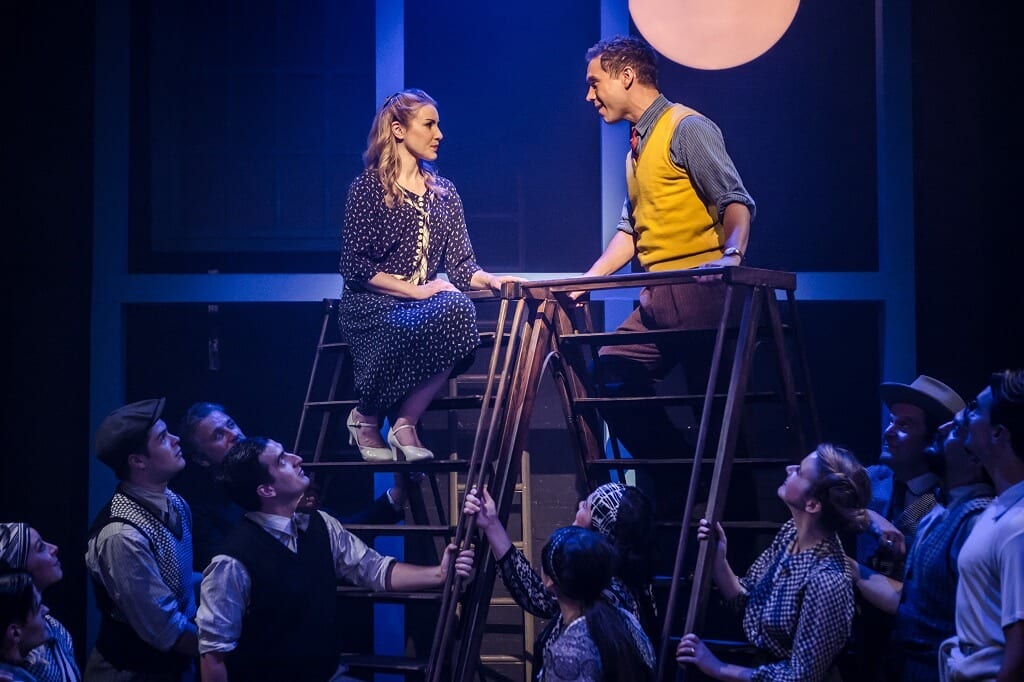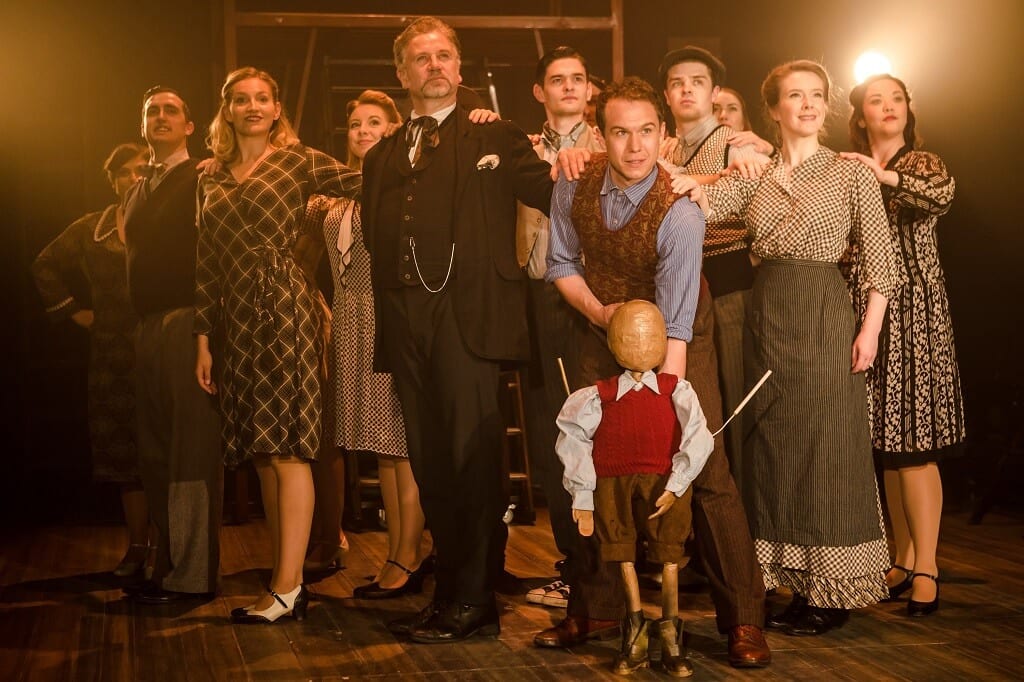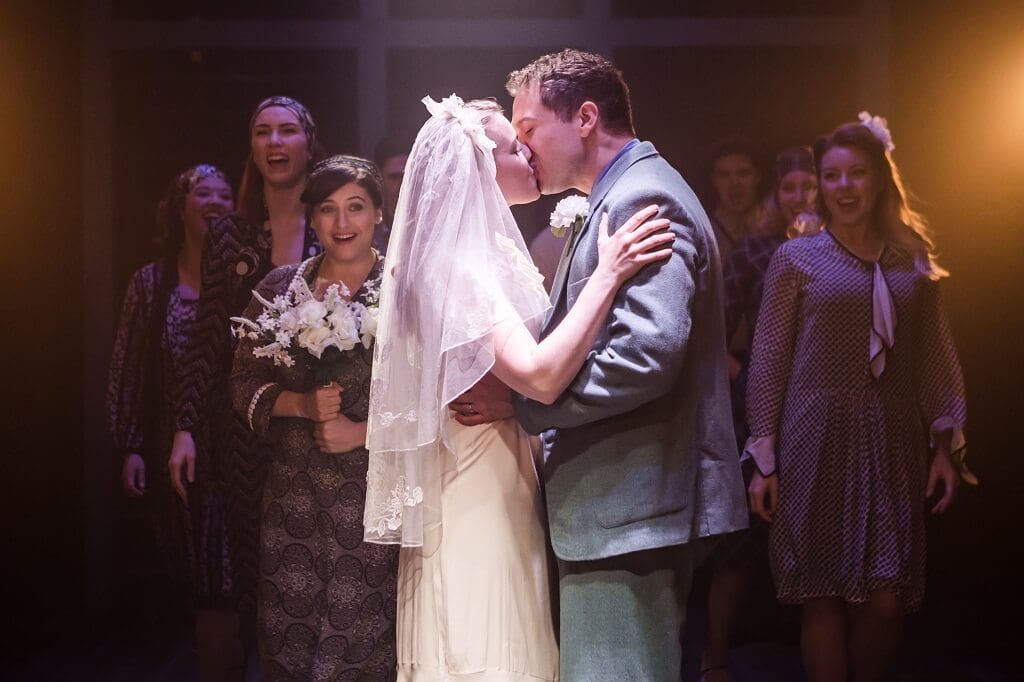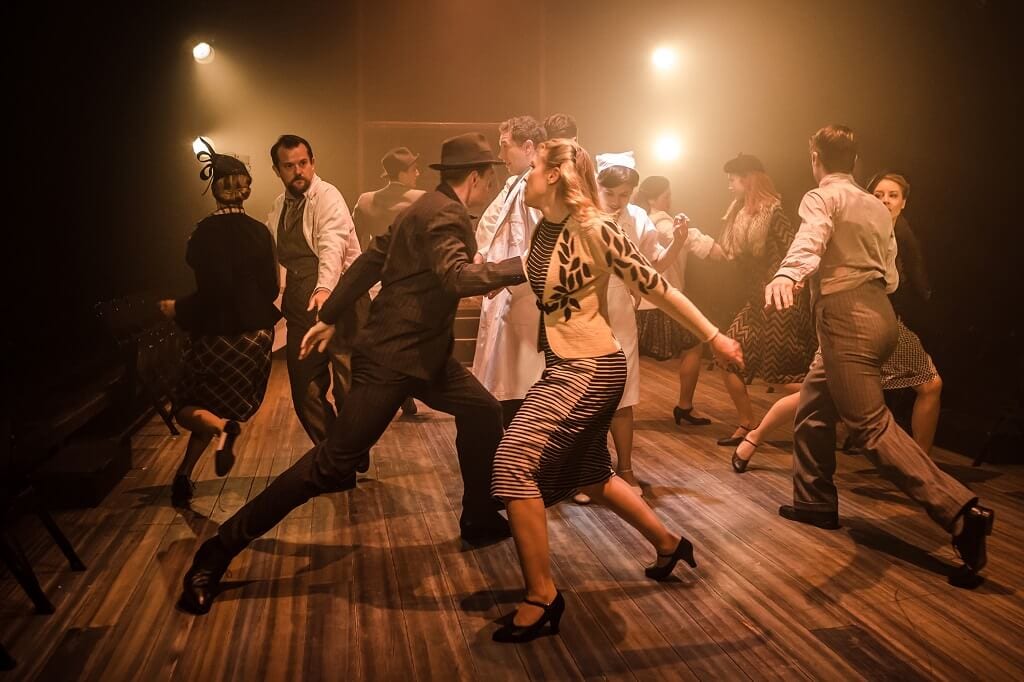Allegro is something of a ‘missing link’ in musical theatre history. Coming after Oklahoma! and Carousel in 1947, it has never found the audiences or critical acclaim of those breakthrough works. In fact hitherto it has never had a European production. This is a real puzzle. In many ways it is the most daring and experimental work of Rodgers and Hammerstein, in both form and substance. Musical prettiness is subordinated to and emerges from dramatic situation, characters who die continue to comment on and intervene in the action, and a chorus commentates on the characters and plot alongside the drama itself in the manner of an Ancient Greek tragedy. The hero, a self-consciously ordinary man, has no really big numbers to himself, and there is no fixed set, with the actors mainly reliant on costume and props and elaborate choreography to get their points across.
It is the story of Joseph Taylor Jr., from birth to mid-life crisis. Joe is an ‘everyman’ figure, apparently destined to succeed his father in the hard-grind rural medical practice his parents have painfully built up. After college he seems likely to settle down with his local sweetheart, Jennie, but she has other ideas for them both, and instead they move to Chicago and a well-paid clinician’s job catering for the mostly imaginary ailments of the super-rich. At the very pinnacle of his success he turns aside from one destiny and deliberately embraces another, thus dramatizing the choices between community service and self-realization that run through the whole evening.
I was not wholly convinced by the first half in which homespun virtues of the rural doctor’s life came over as a hokey and sentimental vision of a now rather faded American dream, despite the full-on heartfulness of the performances. However, the second half was a hard-hitting revelation, as pertinent now in the age of Trump, as it was misunderstood in the late 1940s. Far from being a dated work Allegro is a thought-provoking tract for the times, with lyrics both warm and witty, and music that embraces two great numbers (‘So far’, and ‘The Gentleman is a Dope’) and some thrilling ensembles, including the title track, which capture the fizzing energy of the Chicago world of ‘benzedrine romances’ that both attracts and appals Joe – as it should us. At points, in fact, the ‘city’ music harks back to Rodgers and Hart.
The sixteen strong cast sing, dance and act with rare skill and panache; but Emily Bull and Gary Tushaw stand out for the way they bring to life to lead roles that could in other hands seem merely manipulative on the one hand, and simply dull on the other. Lee Proud’s choreography has little space to work with but accomplishes variety of mood and energy with flair. Anthony Lamble’s set is in a sense no more than a couple of ladders and a moveable tower but these are enough to create specific milieus and multiple levels. Thom Southerland’s direction is as supple, authentic and imaginative as in Grey Gardens in this theatre at the start of the year.
For anyone interested in musical theatre this is a must-see show in a superbly crafted production. It is both a parable of its period (in the same way as Capra’s It’s a Wonderful Life), and revolutionary – in that it anticipates so many of the innovations we now associate with Sondheim, who was assistant producer back in 1947. It is in fact the specific antecedent of his Merrily We Roll Along even though time’s arrow flies in a different direction.





